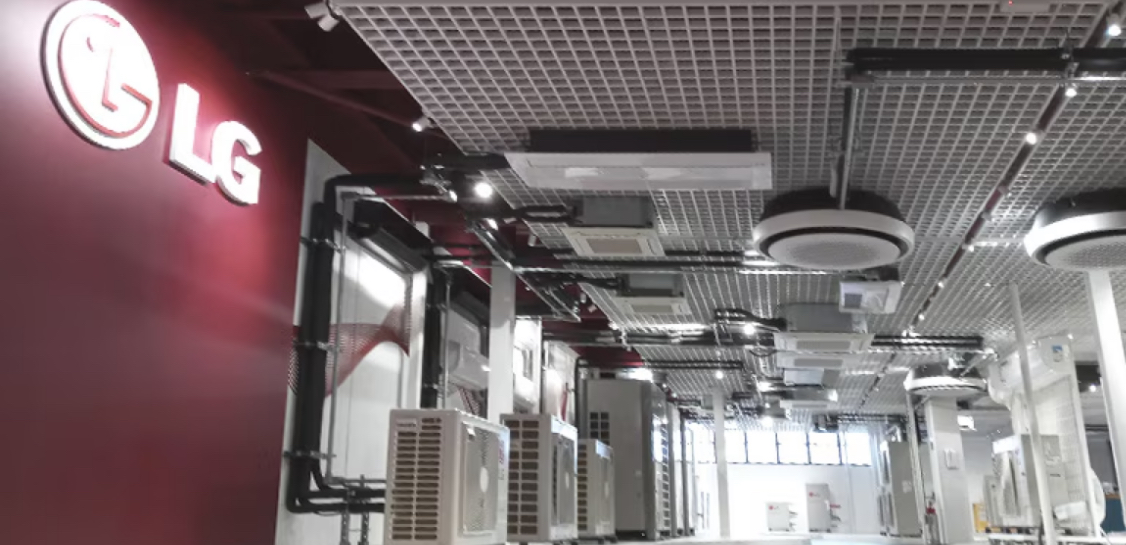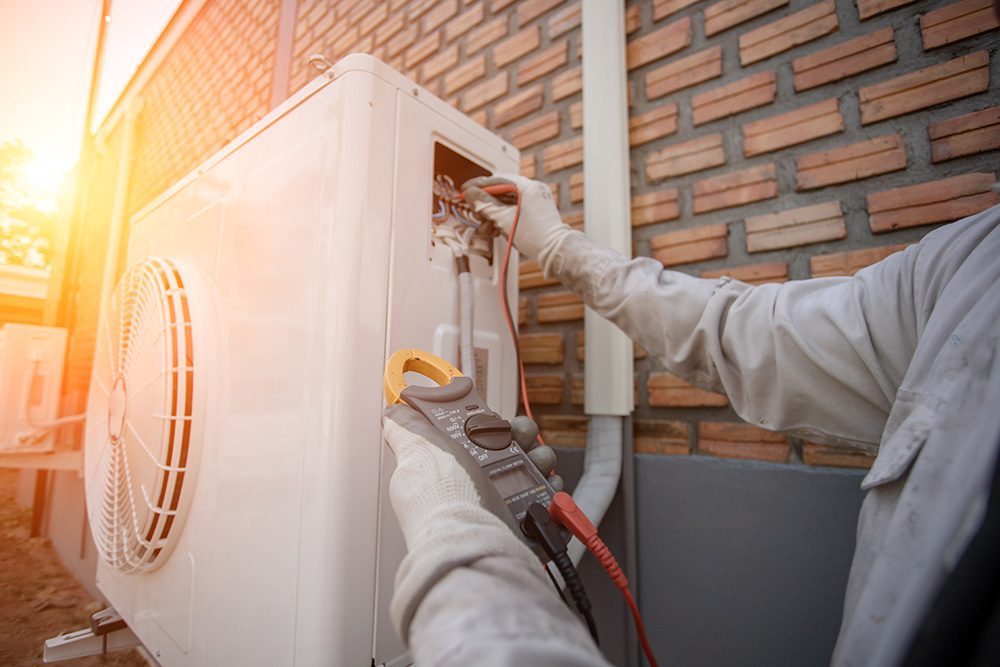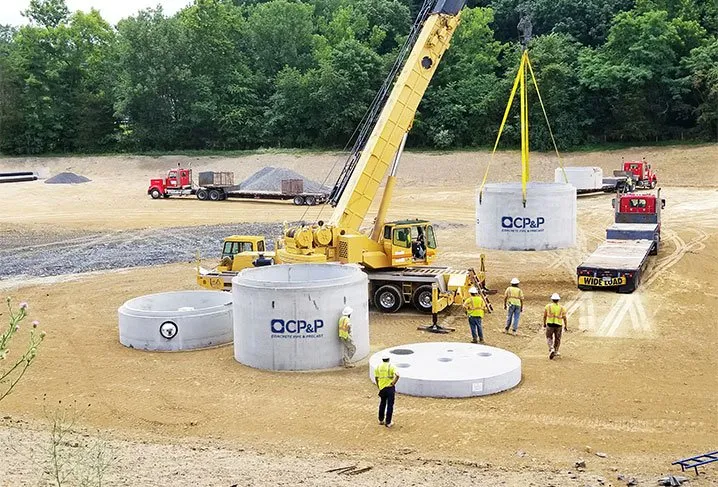Variable Refrigerant Flow (VRF) technology represents a significant leap forward in the way heating, ventilation, and air conditioning (HVAC) systems operate. Introduced to the HVAC market in the early 1980s by Daikin Industries, a Japanese firm, VRF systems have revolutionized climate control with their ability to deliver precise comfort levels across multiple zones within a building while maintaining high energy efficiency.
At its core, VRF technology is designed to adjust the volume of refrigerant flowing to each zone in direct response to the specific cooling or heating demands of that area. This level of precision is achieved through sophisticated control systems and modular design, which allows for individual indoor units to operate independently.
Unlike traditional HVAC systems that may use a central unit to deliver a one-size-fits-all temperature setting, VRF systems empower users to customize the climate in different rooms or zones. This means occupants in a building can set various temperatures for separate areas, enhancing comfort without the inefficiency of heating or cooling spaces unnecessarily.
An integral part of modern building design, VRF systems cater to a wide range of applications, from small residential buildings to expansive commercial properties. Thanks to their flexibility, they can be easily adapted to retrofit projects or implemented in new constructions, aligning with contemporary trends towards sustainability and personalized climate control. As we move forward, VRF technology continues to evolve, incorporating advanced diagnostics, Improved connectivity, and smarter controls to further transform the landscape of HVAC solutions.
The Benefits of VRF Systems: Efficiency and Comfort
Variable Refrigerant Flow (VRF) systems have revolutionized the world of Heating, Ventilation, and Air Conditioning (HVAC) by delivering unparalleled efficiency and comfort. These systems adaptively control the amount of refrigerant flowing to multiple indoor units, enabling precise temperature control and significant energy savings. One primary benefit of VRF technology is its ability to operate at varying speeds, allowing the system to work only at the necessary capacity to maintain a set temperature, rather than cycling on and off, as seen in traditional systems.
This modulating feature minimizes energy consumption and reduces wear and tear on the system’s components, extending their lifespan. VRF systems can also capture and repurpose heat during the cooling process, redirecting it to areas that may require heating. By doing so, they showcase remarkable energy efficiency, often leading to reduced utility costs for residential and commercial users alike.
Moreover, VRF systems offer superior comfort levels by providing consistent indoor climate conditions with minimal temperature fluctuations. With the ability to control individual zones independently, users can customize heating and cooling settings to their preferences. This means that different areas of a building can maintain their ideal temperatures without affecting one another, ensuring a personalized environment that caters to the comfort of every occupant.
Thanks to these advantages, VRF systems represent a compelling choice for those looking to optimize their energy consumption while achieving a higher standard of comfort within their living or working spaces.
How VRF Systems Work: A Technical Overview
Variable Refrigerant Flow (VRF) systems represent a significant evolution in the way heating, ventilation, and air conditioning systems operate. The core principle behind VRF technology is its ability to control the amount of refrigerant flowing to multiple indoor units from one outdoor condensing unit. This allows for precise temperature control in different zones or rooms within a building, providing customized comfort and improved overall energy efficiency.
A VRF system consists of an outdoor unit containing the compressor, which is connected to multiple indoor units through refrigerant lines. The indoor units can be various types such as wall-mounted, ceiling-suspended, or concealed duct units, accommodating the specific design needs of the space. The refrigerant flow is regulated using either electronic expansion valves or inverter compressors, which can alter the compressor’s speed based on demand.
The system’s intelligence lies in its ability to monitor individual zone needs and adjust the refrigerant volume accordingly. When a zone requires cooling, the VRF system delivers a greater volume of refrigerant to the corresponding indoor unit. Conversely, if heating is required, the flow reverses, extracting heat from the outdoor air and distributing it indoors. This is achieved through sophisticated control systems and sensors that continually assess temperature levels and adjust operation dynamically, resulting in highly efficient performance.
Advanced VRF systems may also incorporate heat recovery, allowing for simultaneous heating and cooling in different zones. This feature is particularly efficient because it recycles the heat extracted from cooled areas for use in zones requiring heating, thus conserving energy and reducing operational costs.
Comparing VRF to Traditional HVAC Solutions
Variable Refrigerant Flow (VRF) systems represent a significant innovation in the realm of heating, ventilation, and air conditioning (HVAC) when compared to traditional solutions. Where traditional HVAC systems often rely on a single, centralized unit to distribute air through a network of ducts, VRF systems feature a decentralized approach. This allows individual zones or rooms to be climate-controlled independently using multiple indoor units connected to one or several outdoor units.
In comparison to traditional systems, VRF offers enhanced energy efficiency. While standard HVAC systems operate on a simple on-off mechanism, VRF systems adjust the flow of refrigerant to each indoor unit based on the specific demand of that zone. This avoids the wastage of energy associated with cooling or heating spaces to a uniform temperature regardless of their occupancy or usage patterns.
Another aspect where VRF outshines traditional HVAC is in the realm of installation flexibility and aesthetic integration. Traditional systems often require large ductwork that consumes valuable space within walls and ceilings, and can dictate room layout and design. Conversely, VRF systems have smaller, less invasive refrigerant piping, offering architects and designers more freedom.
Furthermore, VRF technology excels in operational quietness. The modulating capabilities of VRF systems not only reduce energy consumption but also lower the noise levels compared to traditional systems, which can improve the comfort levels in noise-sensitive environments such as libraries, hospitals, and office buildings.
While the initial investment for a VRF system may be higher than that of a traditional HVAC system, the long-term savings on energy bills, combined with the increased control over environmental conditions, typically result in a favorable return on investment. Thus, for many applications, VRF systems offer an attractive alternative to traditional heating and cooling methods.
Implementing VRF in Residential and Commercial Spaces
Variable Refrigerant Flow (VRF) systems have been increasingly adopted in both residential and commercial spaces due to their flexibility, efficiency, and scalability. In residential settings, VRF technology allows homeowners to achieve superior comfort through precise temperature control for multiple zones within the home. Each zone can be individually adjusted to meet the occupants’ preference without affecting other areas, making it an ideal solution for multifamily dwellings or houses with varying occupancy and thermal loads.
For commercial applications, VRF systems offer a practical climate control solution by catering to the diverse needs of office buildings, hotels, schools, and retail spaces. The ability to handle varying loads and adapt to the unique requirements of different zones within a single facility is a decisive advantage. The modularity of VRF systems makes them favorable for retrofit projects as they can be installed with minimal disruption to the existing structure. Furthermore, commercial buildings can benefit significantly from the energy savings which VRF systems provide, as heating and cooling often account for a substantial portion of their operational costs.
Implementing VRF technology requires careful planning and design to maximize the benefits. Installing the correct number of indoor and outdoor units, along with the sophisticated controls that manage the flow of refrigerant, is crucial to ensure an efficient and effective system. As awareness of VRF systems’ advantages grows, their presence in residential and commercial markets is poised to expand, with the potential to revolutionize how we approach heating and cooling in various spaces.
The Future of Climate Control: Advancements in VRF Technology
As we venture further into the 21st century, the advancements in Variable Refrigerant Flow (VRF) technology are poised to transform the landscape of climate control. VRF systems, renowned for their flexibility, efficiency, and precision in temperature management, are at the forefront of HVAC innovation. The future of VRF technology heralds even greater integration with smart building designs and IoT devices, enabling systems to adapt in real-time to occupancy patterns and individual preferences.
The use of advanced sensors and predictive analytics in VRF systems is becoming increasingly prevalent. These enhancements allow for sophisticated monitoring and control, which improve energy conservation and reduce operational costs. In a world where energy efficiency and sustainability are paramount, VRF technology is evolving to utilize eco-friendly refrigerants with lower Global Warming Potential (GWP), which aligns with international environmental regulations and standards.
Furthermore, the drive towards more modular and scalable VRF solutions is likely to continue. This adaptability will enable easier customization for a variety of building sizes and types, from small residential units to expansive commercial complexes. As renewable energy sources like solar power become more commonplace, VRF systems that seamlessly integrate with these renewable solutions are set to become the gold standard, offering a low-carbon footprint alternative to traditional heating and cooling methods.
- Investments in R&D are paving the way for VRF units with enhanced diagnostic capabilities and machine learning algorithms, allowing for predictive maintenance and minimizing downtime. The emergent focus on user-friendly interfaces and remote management tools signifies that the control of indoor climates will become ever more intuitive and accessible. As VRF technology continues to mature, it will be central to creating comfortable, sustainable, and smart environments that cater to the evolving demands of the modern world.










